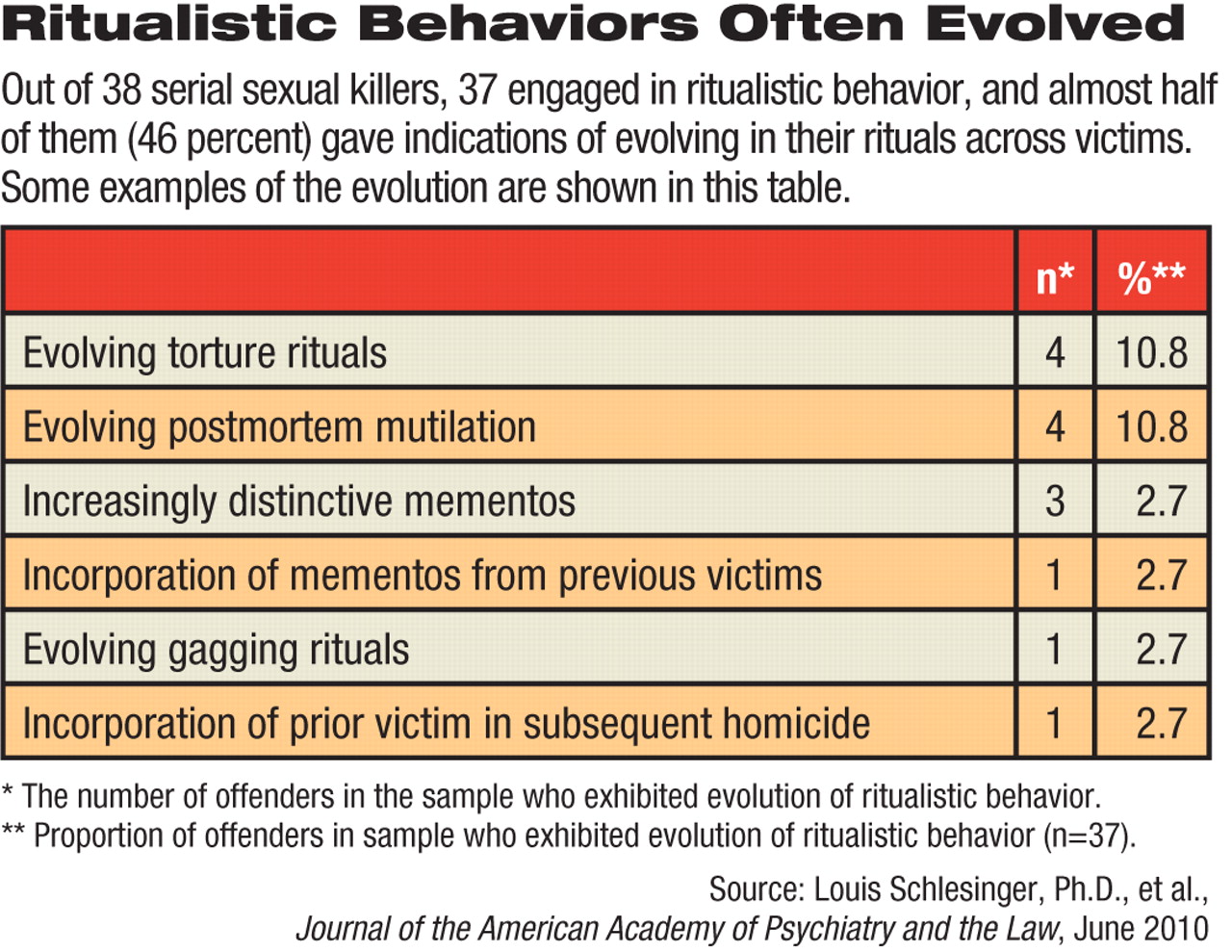A study headed by Louis Schlesinger, Ph.D., a professor of forensic psychology at the John Jay College of Criminal Justice in New York and published in the June Journal of the American Academy of Psychiatry and the Law deserves attention for several reasons.
First, the study concerns the riveting subject of serial sexual killers and the ritualistic behaviors in which they engage. Such behaviors are deviant sexual fantasy-driven behaviors beyond what is necessary to cause death of the victim—say, mutilation, torture, rape, necrophilia, or the collection of “souvenirs” of the crime.
The study was based on the records of 38 serial sexual killers and their 162 victims obtained from the FBI's Behavioral Science Unit. They were closed cases, all fully adjudicated, and the only ones concerning serial sexual killers available through the unit for research purposes. The offenders had committed at least two and as many as 11 sexually motivated murders.
Second, “It is, to the best of my knowledge, the first study that empirically documents repetitive and ritualistic behaviors of men who have killed two or more victims,” Roy Hazelwood said in an interview. Hazelwood, a retired FBI agent, is an international authority on the profiling of sexual criminals.
And third, while the study confirms the general belief that serial sexual killers often engage in ritualistic behaviors, it also debunks the common belief that such killers engage in “signature” behaviors—that is, identical ritualistic behaviors—at each crime scene.
Specifically, while 97 percent of the killers had engaged in ritualistic behaviors with at least two of their victims, only 14 percent had engaged in the same ritualistic behavior with all their victims.
Moreover, in almost half the cases studied (46 percent), the killers' ritualistic behaviors changed over time. For example, several offenders engaged in more elaborate torture with subsequent victims. One began with postmortem genital mutilation and progressed to dismemberment. Another graduated from puncturing the eyes of his first victim to enucleating the eyes of his second and third ones. The extent of offenders' experimentation at crime scenes surprised him, Schlesinger told Psychiatric News.
The findings have important implications for mental health, criminology, and law-enforcement professionals, the researchers believe. For instance, if ritualistic behaviors at one crime scene are not identical to those at another, it does not necessarily mean that two different people committed the two crimes. And because the potential rate of error in using ritualistic behaviors to identify serial sexual killers is substantial, such behaviors should not be admissible scientific evidence in court, Schlesinger and his colleagues wrote in their report.
David Scasta, M.D., a Milford, Pa., forensic psychiatrist who reviewed the study for Psychiatric News, agreed with this conclusion. “The authors found that the behaviors of serial sexual killers are too complex and subject to too much change and evolution to make any blanket statements about the characteristics of perpetrators of such murders,” he said. The study had no outside funding.

